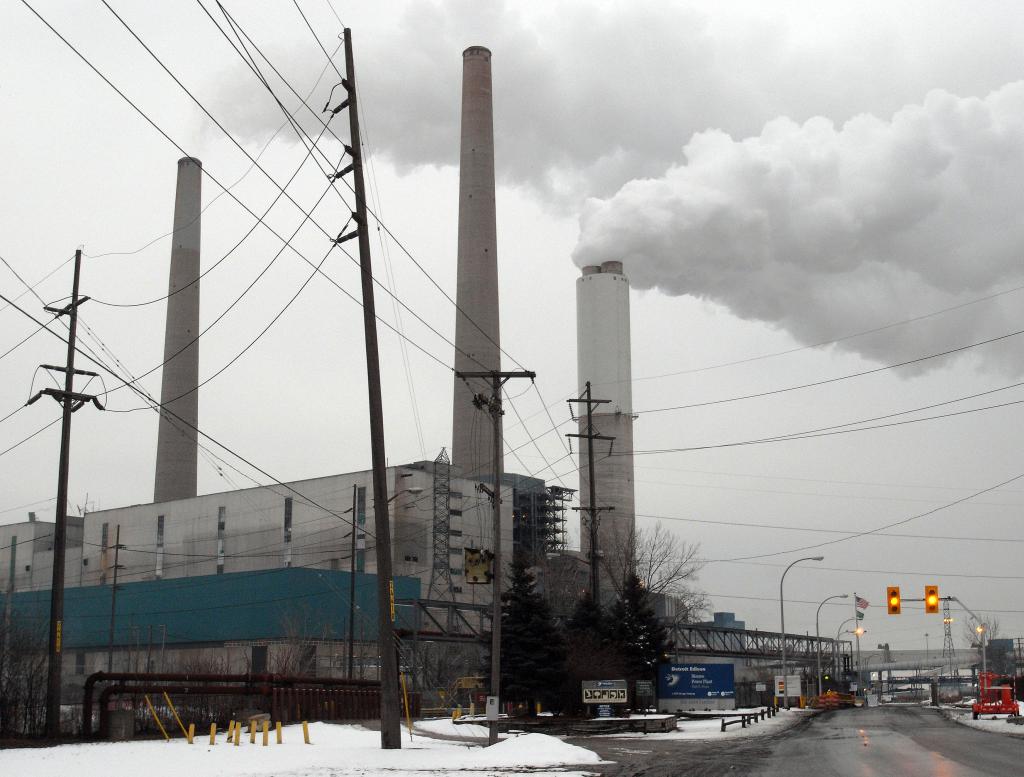WASHINGTON – President Obama, a longtime believer in ”clean coal,” is launching an ambitious and expensive plan to help the energy industry lock climate-changing gases from coal-fired power plants deep underground.
”If we can develop the technology to capture the carbon pollution released by coal, it can create jobs and provide energy well into the future,” the president said this month at a meeting with Republican and Democratic governors, including those from coal-mining states.
The idea, which has been around for years, is a key part of Obama’s plan for building a diverse mix of power sources — including more nuclear energy, oil and natural gas drilling and renewable energy — while also putting the country on a path to an 80 percent reduction in emissions of heat-trapping gases by 2050.
On the face of it, making the nation’s abundant supply of coal less polluting is alluring. Keeping coal in the energy equation preserves jobs, and a way of life.
However, some scientists, clean-energy advocates and electricity producers are questioning Obama’s approach. Instead, some argue, the world should phase out coal, use natural gas more efficiently and put more emphasis on renewable energy.
Critics of the administration’s coal strategy also say it will be too expensive to retrofit existing plants with new technology, capture the carbon dioxide, compress it and pipe it to underground storage. More coal also would be needed to run the capture equipment.
What’s more, the process wouldn’t reduce coal’s other pollution problems: smog, mercury, and the toxic metals such as lead and selenium in coal ash. Continuing to rely on coal also would do nothing to end the environmental damage of mining the coal itself.
The issue has provoked strong feelings on all sides.
The Sierra Club has created a national advocacy organization — Beyond Coal — to end the nation’s dependence on coal.
Bruce Nilles, the club’s national coal campaign director, said that coal should be phased out by 2030. As for the government’s goal of getting carbon capture and storage ready for wide use by then: ”We’re highly skeptical.”
The environmental group favors an expansion of renewable energy and efficiency, including efficient uses of natural gas. Nilles cited Cornell University’s new combined heat and power plant, which is fueled by natural gas. The plant generates the majority of Cornell’s electricity, and the waste heat is used for campus heating. The new plant replaces a coal-fired one.
James Hansen, the NASA climate scientist who warned about global warming two decades ago, says that coal should be phased out worldwide by 2030.
”If coal emissions are phased out rapidly — a tall order, but a feasible one — the climate problem is solvable,” Hansen wrote in his book ”Storms of My Grandchildren.”
He questioned whether capture and safe storage of carbon emissions would ever be adopted on a large scale, ”given its likely high cost, possible leakage of carbon dioxide from storage sites, and environmental damage from coal mining.”
The Sierra Club has said it likes the president’s overall energy plan, but disagrees with him on coal.
Energy Secretary Steven Chu, a scientist and Nobel Prize laureate, has said that he’s looked at the science of carbon capture and storage and concluded that the technology challenges are large, but could be cracked with enough effort.
Chu also has said that wind and solar power can provide no more than 20 percent to 30 percent of U.S. energy until better electricity storage technology is invented, something the Department of Energy is pursuing.
Heather Zichal, the White House deputy assistant for energy and climate change, said Obama wants to diversify the energy mix in a way that allows the country to meet its emissions reductions and energy independence goals. It also sees jobs potential.
”To the extent we can corner the market on developing new technology, it’s an opportunity for us to create jobs in exporting this technology,” Zichal said.
About 500 U.S. coal-burning power plants provide about 48 percent of the nation’s electricity. The Midwest and South are big coal consumers, but other parts of the country, even the West, where hydropower is a bigger part of the energy mix, also generate electricity by burning coal. The average U.S. coal plant is about 33 percent efficient, meaning that about a third of the coal it burns generates electricity and the rest is lost as heat.
Copy the Story Link
Send questions/comments to the editors.



Success. Please wait for the page to reload. If the page does not reload within 5 seconds, please refresh the page.
Enter your email and password to access comments.
Hi, to comment on stories you must . This profile is in addition to your subscription and website login.
Already have a commenting profile? .
Invalid username/password.
Please check your email to confirm and complete your registration.
Only subscribers are eligible to post comments. Please subscribe or login first for digital access. Here’s why.
Use the form below to reset your password. When you've submitted your account email, we will send an email with a reset code.